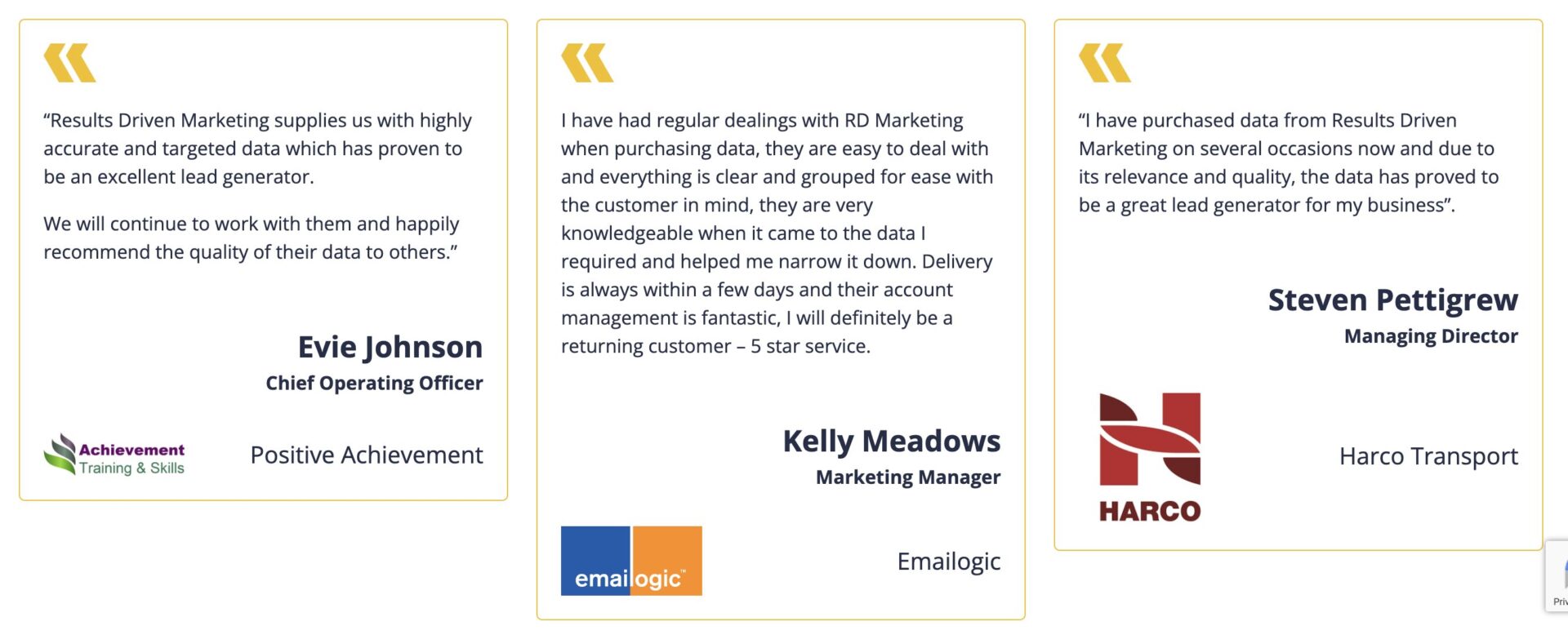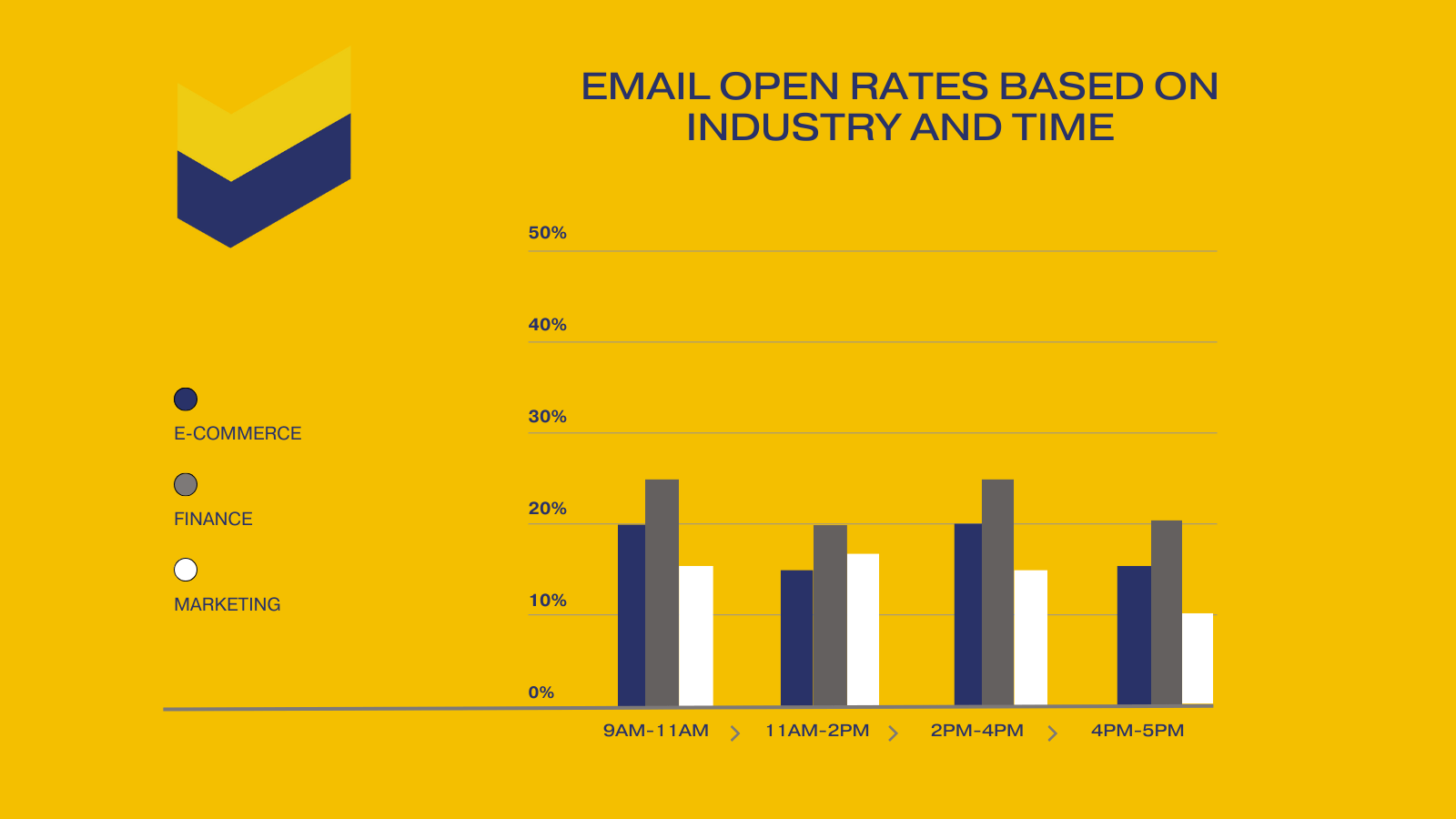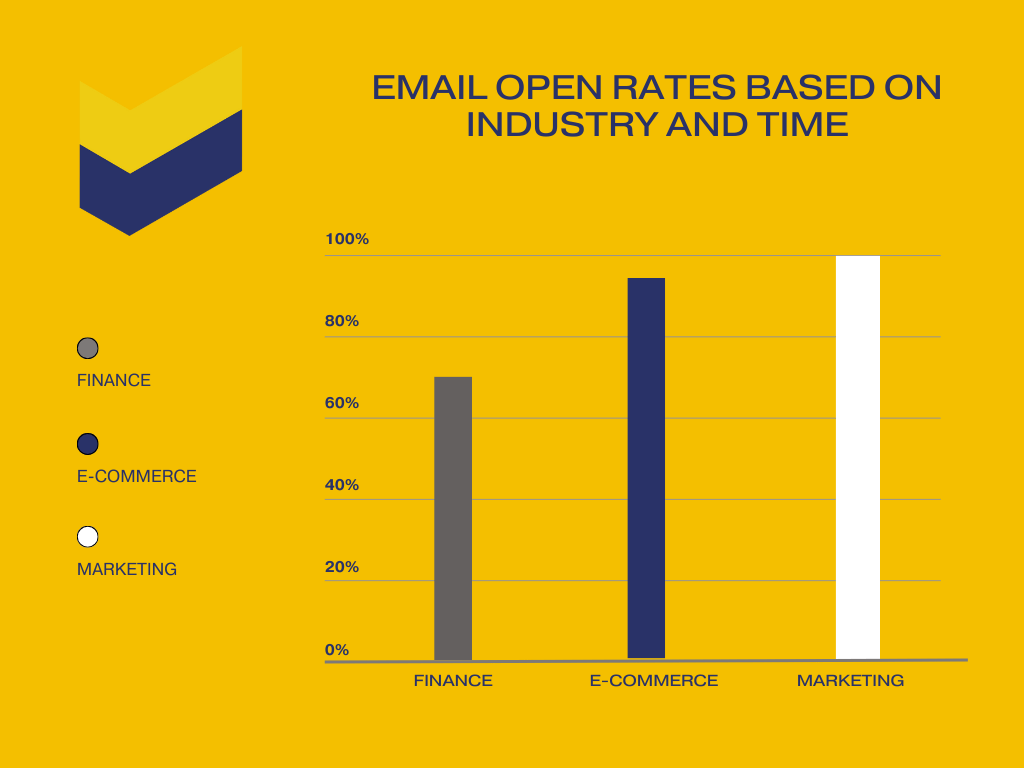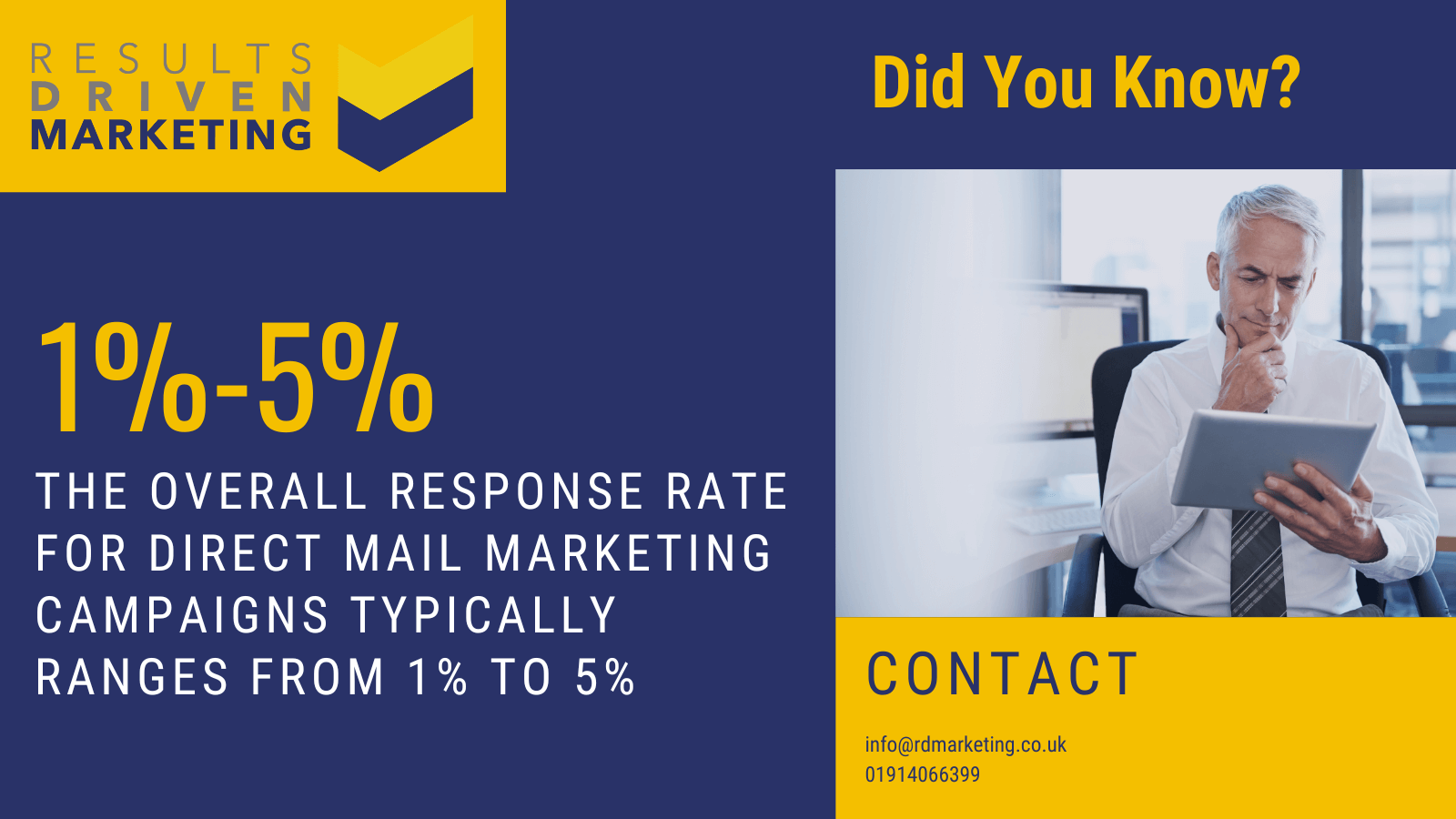
Purchased Lists | How Often Can You Use Them?
Purchased lists are a popular tool for B2B marketers who want to connect with decision-makers quickly — but there’s often a lot of confusion around how frequently these lists can actually be used.
In simple terms, purchased lists refer to third-party business contact databases that you buy under a license agreement. These lists typically include names, job titles, email addresses, phone numbers, and postal addresses — all filtered by criteria like company size, industry, or location.
However, many businesses aren’t sure where the boundaries lie. Can you use a purchased list once and that’s it? Can you send multiple campaigns to the same contacts over time? Are there risks? And how do you stay compliant?
In this guide, we’ll break it all down clearly. We’ll cover how often you can use purchased lists, what to watch out for, how to stay within legal limits, and how to optimise usage for better performance. We’ll also touch on best practices like data cleansing and CTPS checking to help you stay compliant and get the most from your campaigns.
Whether you’re sending direct mail, running cold call campaigns, or launching email marketing using email address list data, this article will give you the clarity you need.
Table of contents:
How Often Can You Use Purchased Lists?
The answer is… it depends on the licensing terms of terms of the supplier you are buying from.
Some lists are single-use, while others, like ours, are supplied on a 12-month multi-use licence. That means you get unlimited use on telephone and postal addresses and a maximum of 12 cold email sends in that 12-month period.
Anyone that you have conversations with, engages with you, becomes a client or shows interest in your services becomes your information. Anyone else can be relicensed after the 12-month period or removed from your database.
The frequency with which you engage leads when you buy data can significantly impact the success of your marketing campaigns. Here’s a deeper dive into the considerations surrounding the optimal use of these lists:
The Importance of Not Overusing the List: Over-reliance on purchased lists can lead to potential leads perceiving your communications as spam. It’s essential to strike a balance to ensure you’re not overwhelming or alienating potential customers.
Recommendations on Frequency Based on Industry Standards: While there’s no one-size-fits-all answer, industry standards suggest contacting leads from purchased lists once every 4-6 weeks. This frequency allows businesses to remain top-of-mind without being overly intrusive.
The Diminishing Returns of Repeatedly Contacting the Same Leads: Repeatedly reaching out to the same leads from purchased lists can lead to diminishing returns. Over time, the response rate may decline, and the chances of conversion can decrease. It’s essential to monitor engagement levels and adjust your approach accordingly.
Tips for Refreshing and Updating the List to Maintain its Effectiveness: To maximise the utility of purchased lists:
Regularly remove unresponsive leads.
Update contact information as needed.
Supplement the contact list with new leads to ensure a continuous influx of potential customers.
What is a Purchased List?
At its core, a purchased list is a collection of contact details, often including names, email addresses, phone numbers, and sometimes more specific demographic information. These lists are acquired from third-party vendors and are ready for use in various marketing campaigns.
Comparison with Organically Built Lists: While purchased lists offer immediate access to potential leads, organically built lists are cultivated over time through methods like content marketing, website sign-ups, and other inbound marketing strategies. The primary advantage of an organically built list is the quality of leads, as these individuals have shown direct interest in the business or it’s offerings. On the other hand, lists provide volume and can be especially useful for businesses entering new markets or industries.
Common Sources and Platforms: There are numerous platforms and vendors that specialise in selling marketing lists. Some of the most common sources include:
- B2B directories and databases.
- Trade show and event attendee lists.
- Specialised data brokers who curate lists based on specific industries or demographics.
- Online platforms that aggregate and sell business contact information.
However, it’s crucial for businesses to vet these sources thoroughly to ensure the accuracy and relevance of the data they’re purchasing. Not all purchased lists are created equal, and the quality can vary significantly between vendors.
Results Driven Marketing have a proven track record of supplying only high quality information that matches your target markets exactly.
Benefits of Using a Purchased List
In the ever-evolving world of marketing, purchased lists have carved out a niche for themselves, offering a range of benefits that can enhance a company’s outreach efforts. Here are some of the primary advantages:
Quick Access to a Large Number of Potential Leads: One of the most apparent benefits of purchased lists is the immediate access to a vast pool of potential leads. Instead of waiting for organic growth, businesses can hit the ground running, initiating campaigns almost instantly.
Targeting Specific Demographics or Industries: Purchased lists often come segmented by various criteria, be it age, profession, industry, or geographical location. This granularity allows businesses to tailor their campaigns to specific demographics, ensuring a higher relevance and potential conversion rate.
Cost-effective for Businesses Needing Immediate Results: For companies launching a new product or entering a new market, time is often a luxury they can’t afford. In such scenarios, purchased lists can be a cost-effective way to generate buzz and interest without the wait associated with organic list-building.
Potential for Expanding Reach Beyond Current Audiences: Even for businesses with an established customer base, purchased lists offer an opportunity to reach beyond their current audience. This expansion can be particularly beneficial for companies looking to diversify their clientele or tap into new markets.
Why Buying Lists Represents a Big Opportunity
Buying lists can be a game-changer for businesses looking to streamline their marketing efforts and achieve impactful results. By providing access to accurate and targeted contact information, these lists help you connect directly with decision-makers, saving you valuable time and resources.
Here’s why buying lists is such a significant opportunity:
- Targeted Reach: Instead of casting a wide net, a purchased list allows you to focus on the specific audience most likely to engage with your products or services. This ensures your message lands with the right people at the right time.
- Faster Campaign Launches: With a ready-made database, you can jumpstart your marketing campaigns without spending time gathering data from scratch. This means you can act quickly to capitalise on market opportunities.
- Improved ROI: Access to quality data boosts the efficiency of your outreach efforts, reducing wasted spend on unqualified leads and increasing the likelihood of conversions.
- Scalability: Whether you’re looking to grow locally or expand globally, buying lists lets you scale your efforts effortlessly, reaching a broader audience without compromising accuracy.
With the right list provider, like Results Driven Marketing, you can be confident that the data you purchase is not only up-to-date but also fully compliant with GDPR and other regulations. This means you can leverage the opportunity of buying lists with peace of mind, knowing you’re setting your campaigns up for success.
Why Buy a Purchased List from Results Driven Marketing?
When it comes to connecting with senior purchasing decision-makers within UK SMEs, having access to a high-quality purchased list can make all the difference. At Results Driven Marketing, we provide businesses with expertly curated, GDPR-compliant marketing lists that help you reach the right people quickly and effectively. Here’s why choosing us for your purchased list is a smart investment:
- Targeted and Relevant Data: Our purchased lists are carefully designed to include only senior decision-makers within UK SMEs. This ensures your campaigns are laser-focused on the people who have the authority to make purchasing decisions, saving you time and effort.
- Up-to-Date and Accurate: Outdated data wastes time and money. Our lists are continuously updated to ensure accuracy, so you can trust that you’re reaching the right contacts every time.
- GDPR-Compliant: We take compliance seriously. All our purchased lists adhere to GDPR regulations, giving you peace of mind that your outreach is legal, ethical, and professional.
- Proven ROI: By targeting the right audience with precision, businesses using our purchased lists consistently experience better response rates, higher conversions, and stronger ROI.
- Expert Support: With over 7 years of experience, our team doesn’t just supply lists—we provide advice and support to help you maximise the impact of your campaigns, whether you’re using email, telephone, or direct mail marketing.
When you buy a purchased list from Results Driven Marketing, you’re not just getting data—you’re gaining a strategic tool that connects you with the right decision-makers to drive business growth. Let us help you create smarter, more effective campaigns that deliver measurable results.
Here’s some examples of clients we have benefited from our purchased lists
Limitations and Concerns
While the allure of purchased lists is undeniable, it’s essential to approach them with a discerning eye. There are several limitations and concerns associated with these lists that businesses should be aware of:
Data Accuracy and Relevance: Not all vendors maintain the same standards of data hygiene. There’s always a risk that the information on lists might be inaccurate, outdated, or irrelevant. This can lead to wasted resources and potential damage to a brand’s reputation.
Potential for Outdated Information: The dynamic nature of businesses and individuals means that contact details can change frequently. Purchased lists might contain outdated emails or phone numbers, leading to lower campaign effectiveness.
Ethical Considerations and Potential Backlash: Sending unsolicited emails or messages can be seen as intrusive by many. Using purchased lists without due diligence can lead to potential backlash, with recipients viewing the company as spammy or untrustworthy.
Legal Implications, Including GDPR and Other Data Protection Regulations: With the advent of stringent data protection regulations like GDPR, businesses need to be extra cautious. Using purchased lists without ensuring compliance can lead to hefty fines and legal repercussions. It’s crucial to understand where the data on these lists comes from.
The main thing to consider is which supplier you work with. Remember, if it wasn’t okay to purchase lists and send email campaigns to them, these companies wouldn’t exist. That said, choose wisely as quality varies.
Best Practices for Using Purchased Lists
These guidelines can enhance campaign effectiveness and ensure compliance with regulations when using email addresses and other data mailing list types:
Segmenting the List for Targeted Campaigns: One of the primary advantages of purchased lists is their granularity. Segmenting these lists based on criteria like demographics, industry, or location can lead to more targeted and effective campaigns.
Integrating Lists with Existing CRM Systems: To streamline operations, it’s beneficial to integrate purchased lists with your existing Customer Relationship Management (CRM) systems. This integration allows for better tracking, follow-ups, and analysis.
Monitoring Response Rates and Adjusting Strategies Accordingly: It’s crucial to keep an eye on how leads from lists are responding. Monitoring metrics like open rates, click-through rates, and conversion rates can provide insights into campaign effectiveness. Based on these insights, strategies can be tweaked for better results.
Ensuring Compliance with Data Protection Regulations: Using mailing lists comes with the responsibility of ensuring data protection compliance. Businesses should:
Verify the source of the list and ensure this it complies with GDPR. Provide clear opt-out options in communications, particularly email addresses. Store and handle data securely to prevent breaches.
The Benefits of Purchased Email Lists
In the digital age, email marketing remains one of the most effective channels for reaching potential customers and driving sales. While many businesses opt to grow their email address lists organically, there’s a case to be made for the strategic purchase of email address lists. Here are some of the benefits of purchasing email lists:
Quick Access to a Large Audience: One of the most apparent advantages is the immediate access to a vast number of potential customers. For businesses just starting out or those looking to expand into new markets, this can provide a significant boost.
Targeted Demographics: Reputable email address list providers offer lists segmented by various demographics, such as age, gender, location, and interests. This allows businesses to tailor their campaigns to specific audiences, increasing the chances of engagement.
Time-Saving: Building an email list from scratch takes time. Purchasing a list can be a shortcut for businesses looking to launch campaigns quickly, especially during time-sensitive promotions or product launches.
Competitive Advantage: Having access to a ready-made list can give businesses a head start, especially in highly competitive markets. It allows them to reach potential customers before their competitors do.
Cost-Effective: While there’s an upfront cost associated with purchasing an email list, the potential ROI can be substantial, especially if the list is of high quality and the email campaign is well-executed.
Diversification of Marketing Strategies: Relying solely on organic growth can limit a company’s reach. Purchasing email lists can be a part of a diversified marketing strategy, complementing other outreach efforts.
However, it’s essential to approach the purchase of email lists with caution. Not all lists are created equal. It’s crucial to ensure that the list is up-to-date, obtained ethically, and complies with data protection regulations.
Leveraging Bought Lists with Responder and Managed Campaign Services
Buying lists is just the beginning of unlocking a world of marketing opportunities. At Results Driven Marketing, we not only provide premium data solutions but also offer tools and services to help you maximise their potential.
Use Responder for In-House Email Marketing
Our powerful Responder platform is the ultimate tool for businesses looking to take control of their email marketing campaigns. Whether you’re new to email marketing or looking to enhance your current efforts, Responder is designed to make your campaigns seamless and impactful.
Key benefits of using Responder:
- Accepts All Email Lists: Easily upload and manage any list, ensuring flexibility and compatibility.
- Super Cost-Effective: Enjoy premium features at a fraction of the cost compared to other platforms.
- User-Friendly: A clean and intuitive interface makes creating and managing campaigns a breeze.
- Full Support Provided: From onboarding to troubleshooting, our expert team is on hand to help every step of the way.
Responder empowers you to send targeted campaigns directly to UK SMEs, turning your purchased lists into a goldmine of leads and opportunities.
Let Us Handle the Work with Managed Email Campaigns
If you’d prefer to leave the hard work to the experts, our Managed Email Marketing Campaign Services are the perfect solution. We take the stress out of email marketing, allowing you to focus on running your business.
What we offer:
- Bespoke HTML Email Design: Our experienced designers craft eye-catching, responsive emails that resonate with your audience.
- Targeted Broadcasts: We handle the entire process, ensuring your message reaches the right decision-makers at the right time.
- Expert Strategy: From content creation to scheduling, our team optimizes every aspect of your campaign for maximum ROI.
Whether you’re managing campaigns in-house with Responder or letting us take the reins with our managed services, our solutions are tailored to help you get the most out of your bought lists.
Take the next step in your marketing journey with tools and services designed to drive results.
Email Marketing to Purchased Lists
Introduction to Email Marketing with Purchased Lists
Harnessing the Power of Purchased Lists in Email Marketing
In the dynamic world of digital marketing, email campaigns remain a cornerstone, especially when leveraging the potential of purchased lists. Imagine tapping into a vast reservoir of potential clients, just waiting to be engaged. This is where the strategic use of purchased lists in email marketing comes into play, transforming the way businesses connect with their audience.
The Unexplored Terrain of Purchased Lists: A Gateway to Targeted Marketing
Purchased lists, often misunderstood, are actually a treasure trove for marketers seeking to broaden their reach. These lists aren’t just random collections of emails; they are curated directories of potential customers, meticulously segmented to align with various business niches. By integrating purchased lists into your email marketing strategy, you’re not just shooting arrows in the dark; you’re a sharpshooter targeting the bullseye.
Email Marketing and Purchased Lists: A Symbiotic Relationship
The synergy between email marketing and purchased lists is undeniable. Email marketing, known for its high ROI and effectiveness, becomes even more powerful when combined with the targeted precision of purchased lists. This combination opens doors to a more focused approach, ensuring that your message reaches the right inboxes, resonates with the intended audience, and yields tangible results.
In the following sections, we’ll dive deeper into the world of email marketing with purchased lists, exploring best practices, measuring success, and crafting campaigns that not only reach but also engage and convert. Stay tuned as we unravel the secrets to mastering email marketing with the strategic use of purchased lists.
Decoding Email Marketing to Purchased Lists: A Comprehensive Overview
Email marketing, a tried-and-true pillar in the digital marketing realm, takes a fascinating turn when it intersects with purchased lists. But what exactly does this entail? Simply put, email marketing to purchased lists involves sending targeted marketing messages to a list of contacts that have been acquired, typically from a third-party provider. This approach contrasts sharply with using organically grown email lists, where contacts are accumulated over time through sign-ups and interactions with your brand.
The Anatomy of Purchased Lists in Email Marketing
Purchased lists are like keys to hidden doors – they unlock access to a broader audience, potentially teeming with individuals who have yet to discover your brand. These lists are meticulously compiled, often segmented based on demographics, interests, or behaviors, making them a potent tool for targeted marketing campaigns. The beauty of purchased lists lies in their ability to catapult your marketing efforts into new territories, reaching out to a fresh, yet relevant audience.
Purchased Lists vs. Organically Grown Email Lists: Understanding the Difference
The main distinction between purchased lists and organically grown email lists is the method of acquisition. Organically grown lists are cultivated over time, blossoming from customer interactions, sign-ups, and other organic engagements with your brand. These lists are like gardens nurtured with care, growing steadily and filled with contacts who have a pre-existing relationship with your brand.
On the other hand, purchased lists are more like a ready-made banquet of potential contacts. They offer immediate access to a vast audience, but without the initial relationship-building that comes with organic lists. This difference is crucial, as it shapes the strategy and tone of your email marketing campaigns. With purchased lists, the challenge is to quickly establish a connection and trust, turning cold contacts into warm leads.
In the next sections, we’ll delve into the strategies and best practices for effectively utilising purchased lists in your email marketing campaigns, ensuring that your messages not only reach but also resonate with this unique audience. Stay tuned as we explore the art of crafting compelling content, segmenting your audience, and measuring the success of your email marketing endeavours with purchased lists.
Unveiling the Advantages of Email Marketing to Purchased Lists
When it comes to email marketing, steering your strategy towards purchased lists can be akin to finding a shortcut to success. Let’s unwrap the layers of benefits that come with this approach, highlighting why it’s becoming an increasingly popular tactic in the marketer’s toolkit.
Quick Audience Reach: The Immediate Gateway to a Wider Audience
One of the most compelling advantages of using purchased lists in your email marketing campaigns is the ability to rapidly expand your audience reach. Think of it as a fast-track pass in an amusement park; you get to bypass the long queues of organic list building and dive straight into a sea of potential customers. This immediate access to a wider audience is particularly beneficial for businesses looking to make a quick impact, launch a new product, or simply expand their market presence.
High ROI Potential: Maximising Returns with Targeted Efforts
Another key benefit of email marketing to purchased lists is the potential for a high return on investment (ROI). Since these lists are often segmented and targeted, your marketing messages are more likely to land in the inboxes of individuals with a genuine interest or need for your products or services. This targeted approach means that every dollar spent on your campaign has a better chance of converting leads into customers, thereby maximising your ROI.
Immediate Results: Seeing the Impact of Your Campaigns Sooner
Lastly, the use of purchased lists in email marketing often leads to immediate results. Unlike organic methods, where building a substantial list can take months or even years, purchased lists offer a ready-made audience. This means you can start seeing the impact of your campaigns almost as soon as they are launched. Whether it’s an uptick in website traffic, an increase in inquiries, or a boost in sales, the immediacy of results with purchased lists can be a game-changer for businesses looking for quick outcomes.
In the upcoming sections, we’ll dive deeper into the best practices for harnessing the power of purchased lists in your email marketing campaigns. From crafting engaging content to measuring the success of your efforts, stay tuned as we explore how to make the most out of this potent marketing strategy.
Weighing the Pros and Cons: Is Email Marketing to Purchased Lists a Wise Choice?
In the realm of digital marketing, the use of purchased lists for email campaigns is a topic that often sparks debate. Is it a savvy strategy or a risky move? Let’s dissect the pros and cons, peeling back the layers to understand this approach better.
The Bright Side: Pros of Email Marketing to Purchased Lists
- Immediate Audience Expansion: Purchased lists offer instant access to a broader audience, a significant advantage for businesses looking to scale quickly.
- Targeted Reach: These lists are often segmented, allowing for more targeted and relevant marketing efforts.
- Speedy Results: With a ready-made audience, you can see the impact of your campaigns faster, a boon for time-sensitive promotions or launches.
The Flip Side: Cons and Considerations
- Quality Concerns: The quality of purchased lists can vary, and low-quality lists may lead to high bounce rates and poor engagement.
- Potential for Brand Damage: Unsolicited emails can sometimes annoy recipients, potentially harming your brand’s reputation.
Comparing Effectiveness: Purchased Lists vs. Other Marketing Strategies
When stacked against other marketing strategies, email marketing to purchased lists holds its ground, especially in scenarios demanding rapid audience expansion and targeted reach. However, it’s not a one-size-fits-all solution. The effectiveness of this approach hinges on how well it aligns with your overall marketing goals, the quality of the lists, and your ability to craft messages that resonate with this new audience.
In the next sections, we’ll delve into the key considerations when embarking on email marketing campaigns using purchased lists. From ensuring legal compliance to crafting compelling content that strikes a chord with your newfound audience, we’ll cover all the bases to help you make an informed decision. Stay tuned as we continue to explore the intricate world of email marketing with purchased lists.
Navigating the Nuances: Key Considerations for Email Marketing to Purchased Lists
Diving into email marketing with purchased lists is not just about crafting catchy emails and hitting send. It’s a nuanced journey, requiring a keen eye for several critical factors. Let’s unpack these considerations to ensure your campaign not only takes off but soars.
Ensuring List Quality: The Bedrock of Successful Campaigns
- Source Verification: Know where your purchased lists are coming from. Reputable sources are key to ensuring the data you receive is not only accurate but also ethically obtained.
- Data Freshness: Outdated data is as good as no data. Ensure the purchased lists are regularly updated for maximum effectiveness.
- Segmentation and Specificity: The more tailored the list to your business niche, the higher the chances of your emails resonating with the audience.
Audience Relevance: Hitting the Right Notes
- Alignment with Your Offerings: The audience in your purchased lists should have a potential interest in your products or services. Irrelevant audiences lead to low engagement and conversion rates.
- Cultural and Regional Considerations: Tailor your content to fit the cultural and regional nuances of the audience. One size does not fit all in email marketing.
In the upcoming sections, we’ll delve deeper into the art of crafting compelling content for your purchased lists, segmenting your audience for maximum impact, and measuring the success of your email marketing campaigns. Stay tuned as we continue to unravel the secrets to mastering email marketing with the strategic use of purchased lists.
Best Practices in Email Marketing to Purchased Lists
Crafting Compelling Content for Purchased Lists: The Art and ScienceWhen it comes to email marketing with purchased lists, creating content that strikes a chord is both an art and a science. It’s about weaving words in a way that resonates with this unique audience, ensuring your message not only lands in their inbox but also piques their interest.
The Blueprint for Engaging Content
- Understand Your Audience: Even though they’re from purchased lists, it’s crucial to understand the demographics, interests, and potential needs of these recipients. Tailor your message to align with these insights.
- Value Proposition: Make it crystal clear what value your email brings. Whether it’s a solution, a special offer, or insightful information, ensure it’s relevant and compelling.
- Personalisation: While challenging with purchased lists, try to add a personal touch. Use data segmentation to customise your messages, making them feel less generic and more engaging.
- Clarity and Conciseness: Get to the point quickly. Your audience’s time is precious, and a concise, clear message is more likely to be well-received.
Mastering Subject Lines and CTAs
- The Power of the Subject Line: This is your first impression. Make it count. Use engaging, curiosity-sparking language that compels the recipient to open the email.
- Call to Action (CTA) Magic: Your CTA should be clear, compelling, and easy to find. Whether it’s ‘Sign Up Now’, ‘Learn More’, or ‘Get Your Discount’, make sure it stands out and aligns with the overall goal of your email.
In the next sections, we’ll explore further into segmenting your audience for maximum impact, integrating your email campaigns with other marketing channels, and measuring the success of your email marketing efforts with purchased lists. Stay tuned as we continue to guide you through the journey of maximising the potential of email marketing with purchased lists.
Tailoring Your Offer: Segmenting Products for Email Marketing to Purchased Lists
Diving into the world of email marketing with purchased lists, one key strategy stands out: segmenting your products or services to resonate with this unique audience. It’s not just about blasting out generic messages; it’s about carefully aligning what you offer with the specific interests and needs of the recipients on these lists.
Strategies for Effective Product Segmentation
- Deep Dive into List Demographics: Start by analysing the demographics of your purchased list. What are the common characteristics of the audience? Age, location, industry, and interests are good starting points.
- Align Products with Audience Needs: Match your products or services with the identified needs and interests of the list. For instance, if your list primarily consists of small business owners, tailor your message around products that solve common small business challenges.
- Create Tailored Messages for Different Segments: Don’t shy away from creating multiple versions of your email, each tailored to different segments of your purchased list. This approach increases the relevance of your message, thereby enhancing engagement.
- Test and Learn: Use A/B testing to see which product messages resonate best with different segments. This continuous learning process will refine your approach and improve the effectiveness of your campaigns.
By segmenting your products or services in alignment with the interests of your purchased list audience, you’re not just sending emails; you’re engaging in a conversation. This strategic approach ensures that your message is not only heard but also appreciated, leading to higher engagement and conversion rates.
In the next sections, we’ll explore how to integrate these email marketing campaigns with other marketing channels and measure their success effectively. Stay tuned as we continue to unravel the intricacies of maximising the potential of email marketing with purchased lists.
Synergising Strategies: Integrating Email Campaigns with Other Marketing Channels
When it comes to maximising the impact of your email marketing campaigns using purchased lists, integration is key. It’s about creating a symphony where each marketing channel plays its part in harmony, enhancing the overall effectiveness of your marketing strategy.
Harmonising Email with Other Marketing Avenues
- Email and Social Media: A Dynamic Duo: Pair your email campaigns with social media efforts. For instance, tease your email content on social platforms or use social media insights to refine your email messaging. This cross-channel promotion creates a cohesive brand experience for your audience.
- Leveraging PPC for Amplified Reach: Combine the precision of email marketing with the broad reach of Pay-Per-Click (PPC) advertising. Use insights from your email campaigns to inform your PPC targeting, creating ads that resonate with similar audiences.
- Content Marketing: The Storytelling Bridge: Integrate your email marketing with your content marketing strategy. Share snippets of your best content in your emails or use your emails to drive traffic to your content. This approach not only provides value to your audience but also establishes your brand as an authority in your field.
By effectively combining your email marketing efforts with other channels like social media, PPC, and content marketing, you create a multi-faceted approach that leverages the strengths of each channel.
This integration not only amplifies your reach but also creates a more unified and compelling narrative for your brand. In the upcoming sections, we’ll delve into how to measure the success of your email marketing campaigns and craft engaging subject lines and CTAs that resonate with your purchased list audience. Stay tuned as we continue to explore the full spectrum of opportunities in email marketing with purchased lists.
Testing and Measuring Email Marketing Success
In the world of email marketing, especially when dealing with purchased lists, the mantra ‘test, measure, and refine’ is crucial. It’s about understanding what resonates with your audience and continuously enhancing your approach for better results.
A/B Split Testing in Email Marketing: Fine-Tuning Your ApproachA/B split testing is like the compass that guides your email marketing ship, helping you navigate towards more effective campaigns. When it comes to purchased lists, this testing becomes even more vital, as it helps you understand the preferences and behaviors of an audience that’s not organically grown.
Step-by-Step Guide to A/B Testing with Purchased Lists
Define Your Variables: Start by identifying the elements you want to test. This could be anything from subject lines, email content, to call-to-action (CTA) buttons. Remember, only test one variable at a time for clear results.
Segment Your List: Divide your purchased list into two (or more) groups. Ensure these segments are randomly chosen to avoid any bias in your results.
Craft Your Variants: Create two versions of your email – one for each segment. Change only the variable you’re testing (e.g., different subject lines for each version).
Send and Monitor: Launch your emails simultaneously to get the most accurate results. Use your email marketing tool to track open rates, click-through rates, and other relevant metrics.
Analyse the Data: Once your test is complete, dive into the data. Which version performed better? What does this tell you about your purchased list’s preferences?
Implement and Repeat: Use the insights gained from your A/B test to refine your future campaigns. Remember, A/B testing is not a one-off task but a continuous process for improvement.
By regularly conducting A/B split tests, you’re not just guessing what works; you’re using data-driven insights to craft email campaigns that truly resonate with your purchased list audience.
In the next sections, we’ll explore how to craft effective CTAs and subject lines, and measure the ROI of your email marketing campaigns to purchased lists. Stay tuned as we continue to unlock the secrets of successful email marketing in the world of purchased lists.
Measuring Email Marketing Campaign Results: The Metrics That Matter
In the intricate dance of email marketing with purchased lists, knowing how to measure your campaign’s performance is like having a backstage pass to the show. It’s about understanding which parts of your performance wowed the audience and which parts need a little more rehearsal.
Tracking the Right Metrics: Your Campaign’s Scorecard
- Open Rates: This is like the first impression. How many recipients are actually opening your emails? High open rates often indicate compelling subject lines and a well-targeted audience.
- Click-Through Rates (CTR): This metric shows how many people clicked on links within your email. It’s a direct indicator of how engaging your content and CTAs are.
- Conversion Rates: Ultimately, you want actions – whether it’s a purchase, a sign-up, or a download. Conversion rates tell you how effectively your email has turned readers into actors.
- Bounce Rates: Keep an eye on how many of your emails are not being delivered. High bounce rates could indicate issues with list quality or deliverability problems.
- Unsubscribe Rates: This is the feedback no one likes, but it’s crucial. A high unsubscribe rate might signal irrelevant content or over-sending.
Measuring ROI: The Financial Lens
- Cost Analysis: Start by calculating the total cost of your campaign, including the cost of purchasing the list, tools used, and any other associated expenses.
- Revenue Tracking: Measure the revenue generated directly from the campaign. This could be through direct sales, sign-ups, or other monetisable actions.
- ROI Calculation: The formula is simple: ROI=Revenue from Campaign−Cost of CampaignCost of Campaign×100ROI=Cost of CampaignRevenue from Campaign−Cost of Campaign×100. This gives you a percentage that represents your return on investment.
- Long-Term Value Assessment: Sometimes, the true value of an email campaign is not immediate. Consider factors like customer lifetime value and long-term engagement.
By keeping a close eye on these metrics and techniques, you’re not just sending emails into the void. You’re gathering valuable insights, learning from each campaign, and continuously refining your approach to ensure that your email marketing efforts with purchased lists are not just a shot in the dark, but a strategic move towards growth and engagement.
In the next sections, we’ll delve into crafting those all-important CTAs and subject lines that can make or break your email campaigns. Stay tuned as we continue to explore the multifaceted world of email marketing with purchased lists.
Legal and Ethical Considerations in Email Marketing to Purchased Lists
Navigating the waters of email marketing, especially when it involves purchased lists, requires more than just a creative flair; it demands a keen understanding of legal and ethical boundaries. It’s about striking a balance between ambitious marketing strategies and staying within the lines of legal and ethical norms.
Compliance and Best Practices: Staying on the Right Side of the Law
Legal Requirements: Your Email Marketing Compass
- Understanding GDPR: If your audience includes EU residents, GDPR compliance is non-negotiable. This means ensuring explicit consent for email communications and respecting data privacy and user rights.
Ethical Considerations: Building Trust and Reputation
- Transparency is Key: Always be clear about who you are and why you’re contacting the recipient. Deceptive practices not only harm your reputation but can also lead to legal troubles.
- Respect Opt-Out Requests: Make the unsubscribe process as straightforward as possible. Respecting opt-out requests promptly is not just a legal requirement; it’s a mark of respect for your audience’s preferences.
- Quality Over Quantity: Focus on sending valuable, relevant content rather than bombarding your list with frequent, low-quality emails. This approach helps maintain a positive brand image and audience trust.
By adhering to these legal and ethical guidelines, your email marketing campaigns to purchased lists can be both effective and respectful. It’s about building a brand that’s not only successful but also trusted and respected in the marketplace. In the upcoming sections, we’ll explore crafting those crucial CTAs and subject lines, ensuring your emails not only comply with legal standards but also captivate your audience. Stay tuned as we continue to delve into the world of email marketing with purchased lists, where compliance meets creativity.
FAQ: Navigating the World of Email Marketing with Purchased Lists
What are the Alternatives to Email Marketing to Purchased Lists?
While email marketing to purchased lists can be a powerful tool in your marketing arsenal, it’s not the only strategy out there. Diversifying your approach can often lead to better engagement and a more robust marketing strategy. Let’s explore some viable alternatives.
Exploring Other Marketing Avenues
- Inbound Marketing: This is all about creating valuable content and experiences tailored to your audience. Inbound marketing attracts customers through relevant and helpful content, leveraging tools like blogs, search engine optimisation (SEO), and social media.
- Organic List Building: There’s something to be said for growing your email list organically. It might take longer, but the results are a more engaged and loyal audience. Techniques include offering valuable content in exchange for email sign-ups, using lead magnets, or encouraging sign-ups through interactive content on your website.
- Social Media Marketing: Platforms like Facebook, Instagram, and LinkedIn offer a vast playground for marketers. By engaging with your audience on these platforms, you can build brand awareness, foster relationships, and even drive traffic to your website or landing pages.
Each of these strategies has its unique strengths and can be used in conjunction with email marketing to purchased lists or as standalone tactics. The key is to understand your audience and choose the methods that best align with your business goals and customer preferences.
In the next sections, we’ll continue to unravel the intricacies of email marketing to purchased lists, ensuring you have all the knowledge at your fingertips to make informed decisions and craft successful campaigns. Stay tuned as we delve deeper into this fascinating world where strategy meets creativity.
Ensuring the Quality of Your Purchased List: A Must-Do for Effective Campaigns
When it comes to email marketing with purchased lists, the quality of your list is as crucial as the content of your emails. It’s the foundation upon which your entire campaign is built. So, how do you ensure that the list you’ve purchased is up to the mark? Let’s dive into some practical tips to help you vet list providers and guarantee the quality and relevance of your list.
Vetting Your List Provider: The Key to a Quality List
- Research the Provider’s Reputation: Start by digging into the provider’s track record. Look for reviews, testimonials, and case studies. A reputable provider should have a history of satisfied clients and a transparent way of list compilation.
- Ask About Source and Compilation Methods: Understanding where and how the list was compiled is vital. Is it aggregated from reliable sources? Are the methods compliant with legal standards like GDPR and the CAN-SPAM Act? These questions will help you gauge the legitimacy and relevance of the list.
- Check for List Segmentation Options: A good list provider should offer segmentation options. This means you can target your emails more effectively, ensuring they reach an audience that’s more likely to be interested in your offerings.
- Inquire About Data Freshness: The relevance of a purchased list diminishes over time. Ask how often the list is updated and the last time it was cleansed. Regular updates indicate a higher quality list.
- Request a Sample: If possible, ask for a sample of the list. This allows you to assess the quality firsthand. Look for indicators like a high number of generic email addresses (e.g., info@company.com) as they might signal a lower quality list.
By following these steps, you can significantly increase the chances of acquiring a high-quality purchased list, setting the stage for a more successful email marketing campaign.
Remember, a quality list not only improves your campaign’s effectiveness but also helps maintain your sender reputation. In the upcoming sections, we’ll explore more about crafting effective CTAs and subject lines, and delve into the nuances of measuring the success of your email marketing campaigns. Stay tuned as we continue to guide you through the intricate journey of email marketing with purchased lists.
Navigating the Pitfalls of Email Marketing to Purchased Lists
Embarking on the journey of email marketing with purchased lists can be akin to navigating a minefield. One wrong step, and you might find your campaign’s effectiveness drastically reduced. Let’s shed some light on common pitfalls in this arena and, more importantly, how to sidestep them gracefully.
Common Mistakes in Email Marketing to Purchased Lists: Avoiding the Traps
- The Peril of Over-mailing: It’s a delicate balance, really. You want to stay in your audience’s mind, but bombard them too much, and you risk becoming an annoyance. The key? Find that sweet spot in your emailing frequency – enough to keep them engaged, not overwhelmed.
- Ignoring the Power of List Segmentation: Treating your purchased list as a monolith is a no-go. Segmentation is your friend here. Tailor your messages to different segments based on demographics, interests, or behaviors. This approach not only boosts engagement but also prevents your emails from becoming irrelevant to segments of your audience.
- Neglecting Personalisation: Just because it’s a purchased list doesn’t mean you can’t add a personal touch. Personalisation goes beyond just using the recipient’s name. It’s about crafting content that resonates with their specific needs and interests. Remember, even a small touch of personalisation can make your emails feel less like a broadcast and more like a conversation.
By steering clear of these common mistakes, you’re not just avoiding pitfalls; you’re paving the way for a more successful and engaging email marketing campaign. It’s about respecting your audience’s inbox, understanding their needs, and delivering content that adds value to their day.
In the next sections, we’ll continue to explore the intricacies of crafting compelling CTAs and subject lines, ensuring your emails not only reach the inbox but also spark the interest of your audience. Stay tuned as we delve deeper into the art and science of email marketing with purchased lists.
Personalising Emails for a Purchased List Audience: A Tailored Approach
Diving into the world of email marketing with purchased lists, one might wonder, “How do I make each email feel personal when I didn’t organically build this audience?” Fear not, for personalisation is still very much on the table. Let’s explore some strategies to tailor your content and make each recipient feel like you’re speaking directly to them.
Crafting Personalised Content for Your Purchased List
- Leverage Available Data: Start with what you know. Even with purchased lists, you often have basic data like names, locations, or industries. Use these snippets to add a personal touch to your emails. A simple mention of their city or industry-specific content can make a big difference.
- Segmentation is Your Ally: Break down your list into smaller segments based on available data. This allows you to tailor your messages more specifically. For instance, sending different content to recipients in different industries or at different stages of the buying cycle.
- Feedback Loops: Encourage feedback and interactions. Use surveys, polls, or interactive content to gather more information about your audience. This not only helps in personalising future communications but also engages your audience actively.
- Behavioural Triggers: If your email marketing software allows, set up behavioral triggers. For example, sending a follow-up email based on the recipient’s action (or inaction) on a previous email. This approach ensures that your communication is responsive and relevant to their behavior.
- Dynamic Content: Utilise dynamic content in your emails. This means certain parts of your email change based on the recipient’s data. For example, showing different images or offers based on the recipient’s location or past interactions.
By implementing these strategies, you can infuse a level of personalisation into your email campaigns, even when dealing with a purchased list. It’s about making each recipient feel seen and understood, transforming your emails from generic broadcasts into tailored messages that resonate.
In the next sections, we’ll delve into crafting those crucial CTAs and subject lines, ensuring your personalised emails not only reach the inbox but also capture the attention and interest of your audience. Stay tuned as we continue to navigate the nuanced landscape of email marketing with purchased lists.
Telemarketing to Purchased Lists
Introduction to Telemarketing with Purchased Lists
In the dynamic world of marketing, telemarketing stands out as a strategy that combines the personal touch of human interaction with the efficiency of direct outreach. It’s a method that has stood the test of time, evolving with technological advancements and changing consumer behaviors. At the heart of this evolution is the use of purchased lists, a tool that has become increasingly pivotal in the telemarketing landscape.
The Essence of Telemarketing as a Strategic Tool
Telemarketing, in its essence, is more than just making calls; it’s about establishing a connection. It’s a strategy that allows businesses to reach out directly to potential customers, engaging them in real-time conversations. This approach is not just about selling; it’s about understanding customer needs, answering questions, and building relationships. The power of telemarketing lies in its immediacy and its ability to provide personalised experiences to each potential customer.
Purchased Lists: A Key Player in Telemarketing
Now, let’s talk about purchased lists. These are not just random collections of contacts. Purchased lists are carefully curated databases of potential customers who are likely to be interested in what you have to offer. They play a crucial role in telemarketing campaigns by providing a targeted starting point for outreach efforts. With purchased lists, businesses can:
- Reach a wider yet more targeted audience.
- Save time and resources in lead generation.
- Enhance the efficiency and effectiveness of their telemarketing campaigns.
In summary, purchased lists are not just a component of telemarketing; they are the fuel that powers the engine of this marketing strategy, driving businesses towards their goals of growth and customer engagement.
Advantages of Telemarketing to Your Purchased Lists
Diving into the realm of telemarketing, especially when leveraging purchased lists, opens up a treasure trove of benefits that can significantly amplify your marketing efforts. Let’s peel back the layers and explore why incorporating purchased lists into your telemarketing strategy can be a game-changer.
Unveiling the Benefits of Using Purchased Lists in Telemarketing
Purchased lists are more than just a means to an end; they are a catalyst for enhanced telemarketing success. Here’s why:
Targeted Reach: Purchased lists provide access to a pool of potential customers already filtered according to various demographics and interests. This means your message is landing in the right inboxes, increasing the likelihood of engagement.
Time Efficiency: With purchased lists, the groundwork of identifying potential leads is already done for you. This saves precious time, allowing you to focus on crafting compelling messages and strategies.
Higher Conversion Rates: Since purchased lists are tailored to your target audience, the chances of converting leads into customers are significantly higher compared to a scattergun approach.
Cost-Effectiveness: While there’s an upfront cost to purchasing lists, the return on investment can be substantial due to the higher accuracy and effectiveness of your campaigns.
Scalability: Purchased lists can be scaled to match the size of your campaign, whether you’re reaching out to hundreds or thousands of potential customers.
Comparing Telemarketing with Purchased Lists to Other Marketing Strategies
When stacked against other marketing strategies, telemarketing with purchased lists holds its ground firmly. Unlike digital marketing tactics that often cast a wide net, telemarketing with purchased lists is akin to precision fishing – you’re reaching out to those who have a higher propensity to bite.
While social media and content marketing are essential in the digital age, they often require time to build momentum. Telemarketing with purchased lists, on the other hand, offers immediate engagement with prospects.
Is Telemarketing to Your Purchased Lists a Good Idea?
In the intricate dance of marketing strategies, telemarketing to purchased lists often emerges as a topic of debate. Is it the golden ticket to sales success, or is it a path fraught with pitfalls? Let’s delve into an analysis to uncover the true effectiveness of this approach.
Analysing the Effectiveness of Telemarketing to Purchased Lists
When we talk about telemarketing to purchased lists, we’re essentially discussing a strategy that’s laser-focused. The effectiveness of this approach can be substantial, but it hinges on several factors:
Quality of the Lists: The success of telemarketing campaigns largely depends on the quality of the purchased lists. High-quality lists, rich with accurate and relevant data, can lead to impressive conversion rates.
Alignment with Target Audience: The effectiveness skyrockets when the demographics and interests in the purchased lists align closely with your target audience. It’s like finding a map where ‘X’ marks the spot of your ideal customer base.
Personalisation and Approach: The way you approach these potential leads is crucial. Personalised, well-crafted messages that resonate with the recipients can turn cold calls into warm conversations.
Integration with Other Marketing Efforts: Telemarketing to purchased lists works best when it’s part of a broader, multi-channel marketing strategy. It’s about creating a symphony where each instrument plays its part harmoniously.
Weighing the Potential Risks and Rewards
Like any marketing strategy, telemarketing to purchased lists comes with its own set of risks and rewards:
- Rewards:
- Direct Customer Engagement: You get the opportunity for immediate feedback and engagement with potential customers.
- Rapid Lead Generation: Purchased lists can accelerate the lead generation process, quickly filling your sales funnel.
- Measurable Results: Telemarketing provides tangible results that can be tracked and analysed for continuous improvement.
- Risks:
- Data Quality Concerns: The effectiveness is only as good as the quality of the purchased lists. Poor data can lead to wasted efforts.
- Reputation Risks: Unsolicited calls can sometimes be perceived negatively, potentially harming your brand’s reputation.
- Compliance and Legal Issues: There are legalities surrounding telemarketing and purchased lists, such as GDPR in Europe, which must be carefully navigated.
In conclusion, telemarketing to purchased lists can be a potent tool in your marketing toolbox, provided it’s used wisely and responsibly. It’s about striking the right balance between reaching out and respecting boundaries, between being persuasive and not intrusive. With the right approach, the rewards can indeed outweigh the risks.
Telemarketing Best Practices for Your Purchased Lists
Embarking on a telemarketing journey with your purchased lists in hand is like setting sail in the vast ocean of potential customers. To navigate these waters successfully, it’s crucial to adhere to certain best practices. These guidelines are not just about making calls; they’re about making connections that count.
Guidelines for Effective Telemarketing
When it comes to telemarketing with purchased lists, effectiveness is key. Here are some guidelines to ensure your voyage is both smooth and fruitful:
Know Your List Inside Out: Familiarise yourself with the demographics and interests represented in your purchased lists. This knowledge is your compass in personalising conversations.
Scripting with Flexibility: While having a script is important, it’s equally vital to be adaptable. Conversations should feel natural, not robotic.
Training and Preparation: Ensure your team is well-trained, not just in the art of conversation, but also in handling objections and providing information.
Quality Over Quantity: It’s tempting to make as many calls as possible, but focusing on the quality of each call can yield better results.
Follow Legal Guidelines: Stay informed about telemarketing laws and regulations to ensure compliance and maintain your company’s integrity.
Tips for Personalising Calls and Respecting Customer Preferences
Personalisation is the secret sauce in telemarketing. Here’s how to add that personal touch while respecting customer preferences:
- Use the Recipient’s Name: It’s a simple gesture, but using the recipient’s name can create an instant connection.
- Refer to Relevant Information: If your purchased lists include specific details like industry or job title, weave this information into the conversation to show that you’ve done your homework.
- Listen Actively: Personalisation is not just about talking; it’s about listening. Understand the customer’s needs and respond accordingly.
- Respect Opt-Out Requests: If a customer is not interested, respect their decision. This not only adheres to legal requirements but also maintains a positive brand image.
- Offer Value: Each call should offer something of value to the recipient, whether it’s information, a solution, or an insight.
By following these best practices and personalisation tips, your telemarketing efforts using purchased lists can transform from mere cold calls to meaningful conversations, opening doors to new opportunities and fostering lasting customer relationships.
Gauging Success: Measuring Telemarketing Campaign Results with Purchased Lists
In the world of telemarketing, especially when leveraging purchased lists, measuring the impact of your campaigns is like using a compass in a voyage. It’s essential to know if you’re heading in the right direction. Let’s explore how to effectively measure and analyse the results of your telemarketing efforts.
Key Performance Indicators (KPIs) for Telemarketing Campaigns
To truly understand the effectiveness of your telemarketing campaigns using purchased lists, you need to focus on specific KPIs. These indicators are like beacons, guiding you to understand what’s working and what’s not. Here are some crucial KPIs to monitor:
Conversion Rate: This is the percentage of calls that result in a desired action, such as a sale or appointment. It’s a direct reflection of how effective your pitch and list quality are.
Call Duration: Longer calls can indicate more meaningful engagement with potential customers. It’s a subtle indicator of interest.
Response Rate: This measures how many people respond to your calls, providing insight into the receptiveness of your audience.
Cost Per Lead: Understanding how much you’re spending to acquire each lead is crucial for evaluating the cost-effectiveness of your purchased lists.
Return on Investment (ROI): Ultimately, you want to know if the money spent on purchased lists and telemarketing efforts is paying off.
Tools and Methods for Tracking and Analysing Telemarketing Results
Now, let’s talk about how to track and analyse these KPIs. In today’s digital age, there are numerous tools and methods at your disposal:
- CRM Integration: Integrating your telemarketing efforts with a Customer Relationship Management (CRM) system can provide a wealth of data and insights.
- Call Tracking Software: These tools can record call duration, track conversion rates, and even provide insights into caller sentiments.
- Analytics Platforms: Utilising analytics platforms can help you dive deeper into the data, allowing you to segment results by various demographics or campaign types.
- A/B Testing: By testing different scripts or approaches, you can compare results and fine-tune your strategy.
- Feedback Surveys: Post-call surveys can provide direct feedback from your audience, offering valuable insights into their experience and perceptions.
By meticulously measuring and analysing these aspects of your telemarketing campaigns with purchased lists, you can not only gauge the success of your current efforts but also refine and enhance future strategies, ensuring a continuous journey towards greater efficiency and effectiveness.
Navigating Legal and Ethical Considerations in Telemarketing
When embarking on a telemarketing campaign using purchased lists, it’s not just about dialing numbers and delivering your pitch. It’s a journey that requires navigating through a sea of legal and ethical considerations, ensuring that every call you make is compliant and respectful.
Legal Considerations in Telemarketing with Purchased Lists
The legal landscape of telemarketing is intricate, with various regulations designed to protect consumer privacy and ensure ethical marketing practices. Here are some key legal aspects to consider:
Compliance with Telemarketing Laws: Familiarise yourself with laws such as the Telephone Consumer Protection Act (TCPA) and regulations regarding Do Not Call registries. Ensuring compliance is not just good practice; it’s a necessity.
Understanding Data Privacy Laws: With purchased lists, it’s crucial to be aware of data privacy laws like GDPR in Europe or CCPA in California. These laws dictate how you can use personal data and require specific consent protocols.
Record Keeping: Maintain detailed records of your telemarketing activities, including consent and opt-out requests. This documentation can be vital in demonstrating compliance.
Understanding Your Audience and the Quality of Purchased Lists
The effectiveness of your telemarketing campaign is deeply intertwined with the quality of your purchased lists and your understanding of the audience they represent. Here’s how to ensure you’re on the right track:
- Audience Analysis: Dive deep into the demographics, interests, and behaviors of the contacts in your purchased lists. The more you understand your audience, the more tailored and effective your communication can be.
- List Quality and Relevance: Evaluate the quality of your purchased lists. Are the contacts relevant to your business? Are the details up-to-date and accurate? High-quality lists are the foundation of successful telemarketing campaigns.
- Segmentation for Personalisation: Consider segmenting your purchased lists based on criteria like location, industry, or past purchasing behavior. This allows for more personalised and effective outreach.
- Feedback and Adaptation: Use feedback from your telemarketing efforts to continuously refine your understanding of your audience and improve the quality of your interactions.
By paying close attention to these legal and audience-related considerations, you can ensure that your telemarketing campaigns using purchased lists are not only compliant and ethical but also finely tuned to resonate with your target audience, setting the stage for successful and respectful engagements.
Mastering the Art of Follow-Up in Telemarketing to Purchased Lists
Once the initial calls of your telemarketing campaign have echoed out, the journey doesn’t end there. Following up is like planting seeds after the first rain; it’s essential for nurturing the initial interest into flourishing relationships. Let’s delve into strategies that can make your follow-up as effective as the initial outreach.
Strategies for Effective Follow-Up
Following up on telemarketing campaigns using purchased lists requires a blend of persistence, tact, and strategy. Here are some key tactics to enhance your follow-up efforts:
Multi-Channel Approach: Don’t just rely on phone calls. Integrate emails, social media, or even direct mail to reinforce your message.
Personalisation: Tailor your follow-up based on the initial conversation. Reference specific points discussed to show that you’re attentive and committed.
Value Addition: Each follow-up should offer additional value. This could be in the form of useful information, a special offer, or an invitation to an event.
Clear Call-to-Action: Be clear about what you want the recipient to do next. Whether it’s scheduling a meeting or trying a product demo, a clear CTA is crucial.
Persistence with Patience: Follow-up requires a delicate balance. Be persistent but not pushy. Respect the prospect’s time and decision-making process.
The Importance of Timing and Message Consistency
Timing and consistency are the rhythmic drums that ensure your follow-up resonates effectively with your audience from the purchased lists. Here’s why they’re important:
- Optimal Timing: Timing can make or break your follow-up efforts. Wait too long, and the lead may go cold. Act too soon, and you might seem pushy. Find the sweet spot that’s just right.
- Consistency in Messaging: Ensure that your follow-up messages are consistent with the initial conversation and overall campaign theme. This builds trust and reinforces your brand message.
- Adapt Based on Feedback: If you’re not getting the desired response, don’t be afraid to tweak your timing or message. Adaptability is key in the dynamic world of telemarketing.
In essence, following up on telemarketing campaigns to purchased lists is about maintaining momentum. It’s about reinforcing the connection made during that first call and gently steering potential customers towards a decision, all while respecting their pace and preferences. With the right strategies, timing, and message consistency, your follow-up efforts can significantly boost the overall effectiveness of your telemarketing campaign.
Deciphering the Numbers: Measuring the ROI of Telemarketing Campaigns to Purchased Lists
In the world of telemarketing, especially when it revolves around purchased lists, understanding the return on investment (ROI) is like having a compass in a treasure hunt. It guides you in determining the true value and effectiveness of your campaigns. Let’s break down how to calculate and interpret the ROI of your telemarketing efforts.
Calculating Return on Investment (ROI) in Telemarketing
Calculating the ROI of your telemarketing campaigns to purchased lists is more than just crunching numbers; it’s about understanding the story behind those numbers. Here’s a step-by-step approach:
Track Your Expenses: This includes the cost of the purchased lists, telemarketing software, staff salaries, and any other associated costs.
Measure the Revenue Generated: Keep a record of the sales or contracts that resulted directly from your telemarketing efforts.
Calculate the Net Profit: Subtract the total expenses from the total revenue generated by the campaign.
Determine the ROI: Divide the net profit by the total expenses and multiply by 100 to get your ROI percentage.
Analyse and Interpret: A positive ROI indicates that your telemarketing efforts are paying off, while a negative ROI suggests a need for strategy adjustment.
Balancing Costs with Benefits in Telemarketing
While calculating ROI is crucial, it’s equally important to balance the costs with the benefits in a broader sense. Here’s how to maintain this balance:
- Cost-Effective Strategies: Look for ways to optimise your telemarketing processes, such as improving call scripts or enhancing staff training, to get better results without significantly increasing costs.
- Long-Term Value: Consider the long-term value of the relationships you’re building through telemarketing. Some benefits, like brand awareness and customer loyalty, might not translate immediately into revenue but are valuable in the long run.
- Quality Over Quantity: Focus on the quality of the purchased lists and the interactions rather than just the volume of calls. Higher quality often leads to better ROI.
- Regular Review and Adjustment: Continuously review your telemarketing strategies and ROI. Be ready to make adjustments to align with changing market trends and customer preferences.
By meticulously calculating and analysing the ROI of your telemarketing campaigns to purchased lists, and balancing the costs with the broader benefits, you can not only gauge the financial success of your efforts but also steer your strategies towards more profitable and sustainable outcomes.
Navigating the Gatekeeper’s Labyrinth in Telemarketing
In the realm of telemarketing, especially when using purchased lists, one of the most intricate dances is getting past the gatekeeper. These individuals hold the keys to the decision-makers and navigating this path requires a blend of tact, respect, and strategy. Let’s explore the techniques that can help you engage with gatekeepers effectively.
Techniques for Engaging with Gatekeepers
Engaging with gatekeepers is not about bypassing them; it’s about earning their trust and respect. Here are some techniques to help you do just that:
Professional Courtesy: Always start with a polite and professional demeanor. Remember, gatekeepers are skilled professionals, and treating them as such sets a positive tone.
Be Direct but Friendly: Clearly state your purpose but do so in a friendly manner. A balance of directness and amiability can go a long way.
Show Genuine Interest: Ask about their role and listen actively. Showing genuine interest can help in building a connection.
Value Their Time: Acknowledge that their time is valuable. Be concise and to the point in your communication.
Use Referrals if Possible: Mentioning a mutual contact or referral can sometimes help in establishing credibility.
Building Rapport and Gaining Access to Decision-Makers
Once you’ve engaged the gatekeeper, the next step is to build rapport to gain access to the decision-makers. Here’s how to navigate this crucial phase:
- Find Common Ground: Use your conversation to find common interests or shared experiences. This can help in creating a more personal connection.
- Be Patient and Persistent: Building rapport takes time. Be patient and persistent in your approach without being pushy.
- Offer Value: Make it clear that your call could be of value to the decision-maker. Gatekeepers are more likely to pass on information if they see a potential benefit for their company.
- Follow-Up Politely: If you’re asked to call back or send information, do so in a timely and respectful manner. This shows that you respect the gatekeeper’s guidance.
- Express Gratitude: Always thank the gatekeeper, regardless of the outcome. Gratitude can leave a lasting positive impression.
By mastering these techniques and approaches, getting past the gatekeeper in your telemarketing campaigns to purchased lists becomes less about a challenge and more about building meaningful professional relationships. This not only increases your chances of reaching the decision-makers but also sets a foundation for respectful and productive interactions.
Broadening the Marketing Horizon: Alternatives to Telemarketing with Purchased Lists
In the ever-evolving landscape of marketing, relying solely on telemarketing to purchased lists can be like putting all your eggs in one basket. It’s essential to explore and embrace a variety of marketing strategies, each offering its unique flavor and advantages. Let’s dive into some of these alternatives and understand how they compare and contrast with telemarketing.
Diversifying with Different Marketing Strategies
The world of marketing is rich with options, each bringing its own set of benefits to the table. Here are some key alternatives to telemarketing and what they offer:
Digital Marketing: This broad category includes everything from social media campaigns to search engine optimization (SEO). It’s great for reaching a wide audience online and can be highly targeted.
Content Marketing: By creating and sharing valuable content, you can attract and engage a specific audience. This strategy is excellent for building brand authority and long-term relationships.
Direct Mail: Sometimes, a physical piece of marketing in the mail can stand out in our digital world. It’s tangible and can be highly personalised.
Event Marketing: Hosting or participating in events, whether online or in-person, can provide direct engagement with potential customers and partners.
Referral Programs: Encouraging your existing customers to refer others can be a highly effective and cost-efficient way to gain new leads.
Each of these strategies has its own strengths and can be used in conjunction with telemarketing for a more comprehensive marketing approach.
Synergising Telemarketing with Other Marketing Efforts
While exploring alternatives, it’s also crucial to consider how telemarketing can be integrated with other marketing efforts for a more cohesive and impactful strategy. Here’s how to blend telemarketing with other tactics:
- Telemarketing and Email Marketing: Use telemarketing to follow up on email campaigns, providing a personal touch to digital communication.
- Social Media and Telemarketing: Utilise social media insights to inform your telemarketing scripts and approach, making your calls more relevant and engaging.
- Content Marketing Follow-Up: After sharing valuable content, use telemarketing to gauge the audience’s response and interest, offering a more direct interaction.
- Combining with Direct Mail: Send out direct mail as a precursor to your telemarketing efforts, creating a touchpoint that can be referenced in calls.
Navigating the FAQs of Telemarketing to Purchased Lists
In the intricate dance of telemarketing, especially when it revolves around purchased lists, questions abound. It’s like navigating a maze with various turns and twists. Let’s address some of the most frequently asked questions to shed light on the path of telemarketing to purchased lists.
Q: What are the Common Challenges in Telemarketing to Purchased Lists?
Telemarketing to purchased lists isn’t always a walk in the park. Here are some common challenges you might encounter:
Data Quality: The accuracy and relevance of the data in purchased lists can vary, impacting the effectiveness of your campaign.
Reaching the Right Audience: Ensuring that the list aligns with your target demographic is crucial but can be challenging.
Legal Compliance: Navigating the legal landscape, like adhering to regulations such as GDPR or the Do Not Call Registry, is essential but can be complex.
Gatekeepers: Getting past gatekeepers to reach decision-makers is often a significant hurdle.
Maintaining Engagement: Keeping potential customers engaged and interested throughout the call can be challenging, especially if the list is not well-targeted.
Q: How Can Technology be Leveraged in Telemarketing to Purchased Lists?
Technology can be a game-changer in telemarketing to purchased lists. Here’s how:
- CRM Systems: Utilise Customer Relationship Management (CRM) systems to track interactions and personalise your approach.
- Auto-Dialers: Implement auto-dialers to increase call efficiency, but ensure it’s done within regulatory compliance.
- Data Analytics: Use data analytics to gain insights into call patterns, success rates, and customer preferences.
- AI and Machine Learning: Leverage AI for predictive analytics to better target calls and improve engagement strategies.
Q: What are the Ethical Considerations in Using Purchased Lists for Telemarketing?
Ethics play a pivotal role in telemarketing to purchased lists. Key considerations include:
- Consent and Privacy: Ensure the individuals on the list have consented to be contacted and respect their privacy preferences.
- Transparency: Be transparent about where you got their information and the purpose of your call.
- Respecting Opt-Outs: Promptly honor opt-out requests and maintain an updated do-not-call list.
- Data Accuracy: Strive to use lists that are accurately sourced and updated to avoid contacting individuals irrelevantly.
Q: How Can Telemarketing to Purchased Lists be Scaled Effectively?
Scaling telemarketing efforts requires a strategic approach:
Invest in Quality Lists: Focus on high-quality, targeted lists to improve success rates.
Train Your Team: Invest in training your team to handle a larger volume of calls effectively.
Use Technology Wisely: Implement scalable technology solutions like advanced CRM systems and auto-dialers.
Monitor and Adapt: Continuously monitor campaign performance and adapt strategies as needed.
Outsource if Necessary: Consider outsourcing to experienced telemarketing firms to handle increased volume.
Q: What are the Signs of a High-Quality Purchased List for Telemarketing?
A high-quality purchased list is like a treasure map in telemarketing. Here are signs to look for:
- Targeted Data: The list should be closely aligned with your target audience demographics.
- Recent Updates: The list should be regularly updated to ensure accuracy.
- Source Transparency: The provider should be transparent about how the data was collected.
- Compliance with Laws: The list should comply with relevant telemarketing and privacy laws.
- Positive Reviews: Look for positive feedback or reviews from other users of the list.
By addressing these FAQs, you can navigate the complexities of telemarketing to purchased lists with greater confidence and effectiveness, ensuring your journey in this marketing realm is both successful and compliant.
Direct Mail Marketing to Purchased Lists
Introduction to Direct Mail Marketing to Purchased Lists
In the ever-evolving landscape of marketing strategies, direct mail marketing stands out as a tried-and-true method, particularly when it’s tailored to purchased lists. Let’s delve into what this entails and why it’s pivotal in today’s business environment.
Direct Mail Marketing: A Snapshot
At its core, direct mail marketing is a traditional yet powerful form of marketing. It involves sending physical marketing materials, such as brochures, postcards, or catalogs, directly to potential customers through postal services.
This approach, often perceived as more personal and tangible than digital alternatives, has a unique charm. It allows businesses to physically place their message in the hands of their target audience, creating a memorable brand experience.
The Role and Relevance of Purchased Lists in Direct Mail Marketing
Now, let’s talk about purchased lists – a term that’s becoming increasingly significant in this domain. Purchased lists are essentially databases of potential customers that businesses can buy from data providers.
These lists are more than just random collections of names and addresses; they are carefully curated to align with specific demographic, geographic, or psychographic criteria.
In the realm of direct mail marketing, purchased lists serve as a compass, guiding your marketing materials to the mailboxes of those most likely to be interested in your offerings.
They are the bridge that connects your message with a receptive audience, enhancing the likelihood of engagement and response. By leveraging these lists, businesses can significantly increase the precision and effectiveness of their direct mail campaigns, ensuring that every brochure or postcard lands in the right hands.
In summary, direct mail marketing, when combined with the strategic use of purchased lists, can be a game-changer for businesses aiming to make a tangible impact in their marketing efforts. It’s about bringing together the best of both worlds – the personal touch of physical mail and the targeted precision of well-curated data.
Benefits of Direct Mail Marketing to Your Purchased Lists
In the dynamic world of marketing, direct mail marketing, especially when it’s aligned with purchased lists, offers a plethora of advantages. Let’s unpack these benefits and understand how they specifically apply to the realm of purchased lists.
Advantages of Direct Mail Marketing: A Closer Look
Direct mail marketing, often seen as a cornerstone of traditional marketing strategies, brings with it several key advantages:
Tangible Connection: There’s something inherently personal about receiving a physical piece of mail. It creates a tangible connection between your brand and the recipient, often leading to higher engagement rates compared to digital alternatives.
Targeted Reach: With direct mail, you have the power to target specific demographics, locations, and consumer behaviors, ensuring that your marketing efforts are not just a shot in the dark.
High Visibility: In an age where digital inboxes are often cluttered, a physical mail piece stands out. It’s less likely to be lost in the shuffle and more likely to grab the recipient’s attention.
Measurable Results: Direct mail campaigns are easily trackable, allowing businesses to measure success through response rates, conversion rates, and ROI.
Tailoring These Benefits to Purchased Lists
Now, when we integrate these advantages with purchased lists, the effectiveness of direct mail marketing skyrockets. Here’s how:
- Precision Targeting: Purchased lists are not just random addresses; they’re a goldmine of potential customers who have been segmented based on specific criteria. This means your direct mail is reaching an audience that is already primed for your message.
- Cost-Effective: By using purchased lists, you’re ensuring that every dollar spent on your direct mail campaign is used efficiently, reaching out to individuals who are more likely to be interested in your product or service.
- Enhanced Personalisation: With the detailed information available in purchased lists, you can tailor your direct mail pieces to resonate with the specific needs and interests of your target audience, thereby increasing the likelihood of engagement.
- Boost in Response Rates: Since purchased lists are curated to include potential customers who are more likely to have an interest in your offerings, direct mail campaigns using these lists often see higher response rates.
In essence, the synergy of direct mail marketing and purchased lists creates a powerful marketing tool. It combines the personal touch of physical mail with the targeted precision of a well-curated database, leading to more effective and efficient marketing campaigns.
Purchased Lists
Navigating the world of direct mail marketing, particularly when leveraging purchased lists, can be akin to walking through a maze – it’s crucial to know the best path to take. Let’s dive into some key strategies that can turn your direct mail campaigns into a resounding success.
Key Strategies for Effective Direct Mail Campaigns When it comes to direct mail marketing using purchased lists, a few strategic moves can make all the difference:
Understand Your Audience: Before anything else, get to know the audience in your purchased lists. What are their preferences, needs, and pain points? This understanding is the foundation of any successful marketing campaign.
Segment Your Lists: Not all recipients are the same. Segment your purchased lists into different groups based on criteria like demographics, purchasing behaviour, or geographic location. This allows for more targeted and relevant messaging.
Craft a Compelling Offer: Your direct mail should include an offer that’s irresistible to the recipient. Whether it’s a discount, a free trial, or exclusive access, make sure it’s something that adds real value.
Timing is Key: Consider the timing of your campaign. Aligning your mail drop with a specific season, event, or buying cycle can significantly increase its effectiveness.
Personalisation, Design, and Message Clarity: Tips to Enhance Your Campaign
To further refine your direct mail marketing efforts, especially when using purchased lists, focus on these critical aspects:
- Personalisation: Go beyond just addressing the recipient by name. Use the data from your purchased lists to tailor the content to their specific interests or past behaviours. Personalisation can transform a standard piece of mail into a meaningful message that resonates with the recipient.
- Eye-Catching Design: The visual aspect of your mail piece is your first impression. Use colors, images, and layouts that grab attention and reflect your brand’s identity. Remember, the goal is to stand out in the mailbox.
- Clear and Concise Messaging: Your message should be straightforward and easy to understand. Avoid jargon or overly complex language. The recipient should be able to quickly grasp the value of what you’re offering.
- Call to Action (CTA): What do you want the recipient to do after reading your mail? Whether it’s visiting a website, calling a number, or redeeming a coupon, make sure your CTA is clear and compelling.
Incorporating these best practices into your direct mail campaigns, especially when utilising purchased lists, can significantly enhance their effectiveness. It’s about striking the right balance between creativity, personalisation, and strategic planning. With these elements in place, your direct mail is not just a piece of communication; it becomes a powerful tool for connection and conversion.
Measuring Direct Mail Marketing Campaign Results
When it comes to direct mail marketing, especially with purchased lists, what gets measured gets managed. Understanding how to track and analyse your campaign’s performance is not just helpful; it’s essential. Let’s explore how you can effectively measure the impact of your direct mail efforts.
A Step-by-Step Guide to Tracking Direct Mail Campaign Performance when using Purchased Lists
To get a clear picture of how your direct mail campaign is performing, follow these steps:
Set Clear Objectives: Before launching your campaign, define what success looks like. Are you aiming for increased sales, more website traffic, or higher brand awareness? Your objectives will guide your measurement strategy.
Use Tracking Tools: Implement tools like unique URLs, QR codes, or promo codes specific to your direct mail campaign. These tools will help you track responses directly back to the mail piece.
Monitor Response Rates: Keep an eye on how many recipients are responding to your campaign. This is a direct indicator of how well your message is resonating with the audience in your purchased lists.
Gather Feedback: If possible, gather feedback from recipients. This can provide valuable insights into how your campaign is perceived and what can be improved.
Key Metrics and KPIs for Direct Mail Marketing when using Purchased Lists
To effectively measure the success of your direct mail campaigns, especially those targeting purchased lists, focus on these key metrics and KPIs:
- Response Rate: This is the percentage of recipients who responded to your mail. It’s a direct measure of engagement and interest.
- Conversion Rate: Of those who responded, how many took the desired action? This could be making a purchase, signing up for a newsletter, or attending an event.
- Cost Per Acquisition (CPA): Calculate the cost of acquiring a new customer through your direct mail campaign. This helps in understanding the financial efficiency of your campaign.
- Return on Investment (ROI): Perhaps the most critical metric, ROI measures the profitability of your campaign. It’s calculated by comparing the revenue generated to the cost of the campaign.
- Customer Lifetime Value (CLV): For long-term success, consider how much value a customer acquired through direct mail will bring over time. This is especially important when using purchased lists, as it helps assess the quality of the leads.
By meticulously tracking these metrics and KPIs, you can gain a comprehensive understanding of your direct mail campaign’s performance. This insight is invaluable, allowing you to refine your strategies, make informed decisions, and ultimately, achieve better results with your purchased lists. Remember, in the world of direct mail marketing, knowledge is not just power – it’s profit.
Following Up on Direct Mail Marketing Campaigns
After the initial excitement of sending out your direct mail pieces, especially to those carefully selected purchased lists, the next crucial step is the follow-up. It’s not just a courtesy; it’s a strategic move that can significantly amplify the impact of your campaign. Let’s dive into some effective strategies for following up after your direct mail campaign.
Strategies for Effective Follow-Up
Following up after a direct mail campaign requires a thoughtful approach. Here are some strategies to consider:
Plan Your Follow-Up Strategy Beforehand: Before you even send out your direct mail, have a clear plan for how you will follow up. This ensures a seamless transition from the initial contact to the next steps.
Use Multiple Channels: Don’t just rely on one method of follow-up. Combine phone calls, emails, or even additional mail pieces to reinforce your message and increase the chances of a response.
Personalise Your Follow-Up: Just like with your direct mail, personalization in your follow-up can make a big difference. Refer to the direct mail piece they received and make the conversation relevant to their needs and interests.
Provide Additional Value: In your follow-up, offer something new – additional information, a special offer, or an invitation to an event. This adds value to the interaction and keeps the recipient engaged.
Timing and Methods of Follow-Up: Why They Matter
The timing and method of your follow-up can make or break the effectiveness of your direct mail campaign. Here’s why they are so important:
- Optimal Timing: The best time to follow up is when your direct mail is still fresh in the recipient’s mind. Typically, this is within a week of them receiving the mail. Wait too long, and your mail might be forgotten.
- Method Matters: The method of follow-up should complement your direct mail. For example, if your mail was formal and business-like, a professional phone call or email would be appropriate. If it was more casual, a friendly follow-up call might work better.
- Consistency is Key: Ensure that the tone and message of your follow-up align with your original mail. This consistency helps in building a coherent brand image and reinforces your message.
In conclusion, following up on your direct mail campaigns, particularly those targeting purchased lists, is not just a step in the process – it’s an opportunity to deepen the connection with your potential customers. By employing these strategies with the right timing and methods, you’re not just following up; you’re fostering relationships that could lead to significant business growth.
Calculating the ROI of Direct Mail Marketing Campaigns
In the world of direct mail marketing, particularly when it involves purchased lists, one of the most critical measures of success is the return on investment (ROI). Understanding and calculating the ROI not only shows the effectiveness of your campaign but also guides future marketing decisions. Let’s break down how you can measure and calculate the ROI of your direct mail marketing campaigns.
How to Measure the ROI of Your Campaigns
Measuring the ROI involves a few key steps:
Track Your Expenses: Start by calculating the total cost of your campaign. This includes the cost of purchasing lists, printing, mailing, and any other associated expenses.
Monitor Your Responses and Conversions: Keep a close tab on how many people responded to your direct mail and, more importantly, how many of these responses converted into actual sales or desired actions.
Assign a Value to Each Conversion: Determine the value of each conversion. This could be the average sale value or the value of a new customer over time.
Gather the Data: Collect all this data in a structured manner, ensuring you have a clear view of the costs, responses, conversions, and values.
Formulas and Examples for Calculating ROI
The basic formula for calculating ROI is:
ROI=(Total Revenue from Campaign−Total Cost of CampaignTotal Cost of Campaign)×100ROI=(Total Cost of CampaignTotal Revenue from Campaign−Total Cost of Campaign)×100
Let’s put this into an example:
- Suppose you spent $5,000 on your direct mail campaign, including the cost of purchased lists.
- Your campaign resulted in 50 conversions.
- The average value of each conversion (sale) is $200.
So, your total revenue from the campaign is 50 conversions x $200 = $10,000.
Using the ROI formula:
\text{ROI} = \left( \frac{$10,000 – $5,000}{$5,000} \right) \times 100 = 100\%
This means you got a 100% return on your investment, doubling the money you put into the campaign.
Calculating the ROI of your direct mail marketing campaigns, especially when using purchased lists, is crucial for understanding the effectiveness of your marketing efforts.
It helps you make informed decisions about future campaigns and ensures that your marketing budget is being used effectively. Remember, a successful marketing campaign is not just about the immediate impact; it’s about understanding the long-term value and continuously optimising for better results.
Getting Past the Gatekeeper in Direct Mail Marketing
One of the unique challenges in direct mail marketing, especially when targeting purchased lists, is ensuring that your mail actually reaches the intended recipient. Often, there are ‘gatekeepers’ – individuals or systems that filter the mail before it gets to the decision-maker. Let’s explore some tips and techniques to navigate this challenge effectively.
Tips for Ensuring Your Mail Reaches the Intended Recipient
Getting your direct mail past the gatekeepers and into the right hands requires a blend of strategy and creativity:
Personalise Your Mail: Gatekeepers are more likely to pass on mail that appears personalised and important. Use the recipient’s name and title, and make the envelope look as personalised as possible.
Professional Presentation: Ensure your mail looks professional and relevant. An official-looking envelope or package can make a difference in how it’s perceived and handled.
Add Value: Include something of value in your mail, like a useful article or a sample. This increases the chances of your mail being noticed and appreciated.
Follow-Up Calls: Sometimes, a follow-up call can help push your mail through. Politely inquire if the intended recipient received your mail and offer to provide any additional information.
Overcoming the Challenges of Gatekeepers
Understanding and overcoming the challenges posed by gatekeepers is crucial:
- Research Your Audience: Know who the gatekeepers are and what their roles entail. Tailoring your approach to their preferences can increase your chances of success.
- Build Relationships: If possible, build a rapport with the gatekeepers. A friendly relationship can make them more likely to pass your mail along.
- Be Persistent, But Respectful: Persistence can pay off, but it’s important to be respectful. If a gatekeeper says no, ask for feedback and use it to improve your next attempt.
- Understand the Company Culture: Different organisations have different cultures. Understanding this can help you tailor your approach to fit the specific environment of your target audience.
Navigating past gatekeepers in direct mail marketing, particularly with purchased lists, is a delicate art. It requires understanding the nuances of human interaction, coupled with strategic planning.
By employing these tips and techniques, you can increase the likelihood of your mail reaching its intended destination, thereby enhancing the effectiveness of your direct mail campaign. Remember, in the world of direct mail, it’s not just about what you send; it’s also about ensuring it gets into the right hands.
Advantages of Direct Mail Marketing to Your Purchased Lists
Direct mail marketing, in the age of digital overload, offers a refreshing and impactful way to reach out to potential customers, especially when it’s aligned with the strategic use of purchased lists. Let’s delve into the specific advantages of direct mail over other marketing forms and how these can be maximised when integrated with purchased lists.
Elaborating on the Specific Advantages of Direct Mail
Direct mail marketing stands out for several reasons:
High Engagement: Unlike emails that can be easily overlooked or deleted, physical mail demands attention. It’s tactile and engaging, often leading to better retention and response rates.
Less Competition: With fewer companies investing in direct mail, your message has a better chance of standing out. It’s a unique way to cut through the noise of digital marketing.
Versatility: Direct mail can take many forms – postcards, catalogs, brochures – allowing for creative and impactful ways to present your message.
Trustworthiness: Physical mail is often perceived as more trustworthy than digital communications. It carries a sense of legitimacy that can enhance brand credibility.
Maximising These Advantages with Purchased Lists
When you combine the inherent benefits of direct mail with the targeted precision of purchased lists, you unlock a powerful marketing synergy:
- Targeted Messaging: Purchased lists provide detailed information about potential customers. This allows you to tailor your direct mail content to match the specific interests and needs of your audience, making your message more relevant and compelling.
- Improved Response Rates: By using purchased lists, you’re sending your mail to individuals who are more likely to be interested in your product or service. This targeted approach can significantly improve response rates.
- Cost-Effectiveness: With purchased lists, you’re not casting a wide net and hoping for the best. You’re strategically targeting individuals who are more likely to convert, which can lead to a more efficient use of your marketing budget.
- Measurable Results: The combination of direct mail and purchased lists makes it easier to track and measure the effectiveness of your campaigns. You can monitor response rates and conversions more accurately, allowing for better ROI analysis and campaign optimisation.
In conclusion, direct mail marketing, especially when paired with purchased lists, offers a unique set of advantages that can elevate your marketing efforts. It’s a blend of traditional and modern marketing tactics, offering the tangibility and trustworthiness of physical mail with the targeted precision of data-driven list selection. By leveraging these strengths, businesses can create more personalised, impactful, and effective marketing campaigns.
Assessing the Viability of Direct Mail Marketing to Purchased Lists
In the ever-evolving landscape of marketing strategies, it’s crucial to pause and assess whether direct mail marketing, particularly to purchased lists, is the right move for your business. This assessment isn’t just about following a trend; it’s about aligning with your business goals and audience. Let’s dive into how you can analyse the suitability of this strategy for your business and the factors to consider when deciding to use purchased lists.
Analysing the Suitability of Direct Mail Marketing for Your Business
To determine if direct mail marketing is a fit for your business, consider the following:
Your Target Audience: Does your target audience respond well to physical mail? Understanding the preferences and behaviors of your audience is key. If they value tangible, personalised communication, direct mail could be highly effective.
Budget Considerations: Direct mail, especially with purchased lists, requires a certain budget allocation. Assess if you have the resources to design, print, and distribute your mail, along with purchasing high-quality lists.
Integration with Other Marketing Efforts: Consider how direct mail can complement your existing marketing strategies. It should be a part of a holistic marketing plan, not an isolated effort.
Measurability and Tracking: Ensure you have the means to track the effectiveness of your direct mail campaigns. This is crucial for understanding ROI and making informed decisions moving forward.
Factors to Consider When Using Purchased Lists
Deciding to use purchased lists for your direct mail campaigns involves several considerations:
- List Quality: The success of your campaign heavily depends on the quality of the purchased lists. Ensure the lists are up-to-date, accurately segmented, and sourced from reputable providers.
- Relevance to Your Business: The lists should be relevant to your business and the products or services you offer. Irrelevant lists won’t just lead to poor results; they could also damage your brand’s reputation.
- Compliance with Regulations: Be aware of legal regulations surrounding direct mail and purchased lists, such as GDPR in Europe. Compliance is not just a legal obligation; it’s also about respecting the privacy and preferences of your potential customers.
- Cost vs. Benefit Analysis: Weigh the cost of purchasing and using these lists against the potential benefits. High-quality lists might be more expensive, but they can also lead to higher conversion rates and better ROI.
In summary, assessing the viability of direct mail marketing to purchased lists requires a careful examination of your business goals, target audience, budget, and the quality and relevance of the lists. It’s a strategic decision that, when done right, can yield substantial benefits for your business. Remember, in the realm of marketing, it’s not just about reaching out; it’s about reaching out effectively.
Key Considerations in Direct Mail Marketing to Purchased Lists
Embarking on a direct mail marketing campaign, especially when it involves purchased lists, is not a decision to be taken lightly. It’s a strategic move that requires careful consideration of several key factors. From the quality of the lists to legal compliance, each aspect plays a crucial role in the success of your campaign. Let’s delve into these important factors, including list quality, targeting, legal considerations, budgeting, and timing.
Important Factors in Direct Mail Marketing
When planning your direct mail campaign, keep these critical elements in mind:
List Quality: The cornerstone of any direct mail campaign using purchased lists is the quality of the lists themselves. Ensure that the lists are current, accurately segmented, and sourced from reputable providers. The relevance and accuracy of these lists can make or break your campaign.
Targeting: Tailoring your message to the specific audience on your purchased lists is vital. Effective targeting means understanding the demographics, interests, and behaviours of the list members, ensuring that your message resonates with them.
Legal Considerations: Navigating the legal landscape is crucial. Be aware of regulations like GDPR for European audiences or CAN-SPAM Act in the U.S. Ensuring compliance not only avoids legal pitfalls but also builds trust with your audience.
Budgeting and Timing: Essential for Campaign Success
Alongside these factors, budgeting and timing are equally important:
- Budgeting: Direct mail marketing requires a clear budget. This includes the cost of purchasing lists, production, printing, and postage. A well-planned budget ensures that your campaign is financially viable and sets clear expectations for ROI.
- Timing: The timing of your campaign can significantly impact its effectiveness. Consider factors like seasonality, industry trends, and the recipient’s schedule. Timing your campaign strategically can enhance visibility and response rates.
In conclusion, when considering direct mail marketing to purchased lists, it’s essential to approach it with a strategic mindset. Paying attention to list quality, targeting, legal compliance, budgeting, and timing can significantly influence the success of your campaign.
Remember, in direct mail marketing, it’s not just about reaching your audience; it’s about reaching them in the right way, at the right time, with the right message.
Alternatives to Direct Mail Marketing to Purchased Lists
While direct mail marketing, particularly to purchased lists, holds its unique charm and effectiveness, it’s always insightful to explore other avenues. In the dynamic world of marketing, having a diverse strategy can be the key to reaching a broader audience and achieving varied business goals. Let’s dive into some alternative marketing strategies that can either replace or complement your direct mail efforts.
Exploring Other Marketing Strategies
Here are some alternatives to consider:
Email Marketing: With its lower cost and immediate delivery, email marketing is a popular alternative. It allows for easy personalisation and tracking, although it can sometimes struggle with high spam filters and low open rates.
Social Media Marketing: Platforms like Facebook, Instagram, and LinkedIn offer targeted advertising options. They provide a vast reach and the ability to engage directly with your audience. However, they require consistent content creation and management.
Content Marketing: This involves creating valuable content to attract and engage your audience. It’s a long-term strategy, focusing on building relationships rather than direct selling.
Search Engine Marketing (SEM): SEM involves paid advertising on search engines like Google. It’s effective for reaching people actively searching for products or services like yours but requires a good understanding of keywords and bidding strategies.
Influencer Marketing: Partnering with influencers can help tap into their followers, offering access to a loyal and engaged audience. The key here is choosing the right influencer whose audience aligns with your target market.
Comparing the Effectiveness of These Alternatives with Direct Mail Marketing
When comparing these alternatives to direct mail marketing, consider the following:
- Reach and Engagement: While digital platforms offer a wider reach, direct mail often results in higher engagement due to its physical and tangible nature.
- Cost-Effectiveness: Digital strategies, like email and social media, are generally more cost-effective than direct mail. However, the ROI of direct mail can be higher due to its targeted approach, especially with purchased lists.
- Personalisation and Trust: Direct mail allows for a high degree of personalisation, which can build trust. Digital platforms also offer personalisation, but they may lack the tangible touch of direct mail.
- Tracking and Analytics: Digital marketing strategies offer advanced tracking and analytics, making it easier to measure campaign performance. Direct mail tracking is improving but can still be challenging compared to digital metrics.
FAQ on Direct Mail Marketing to Purchased Lists
Direct mail marketing, particularly when it involves purchased lists, often raises a number of questions. From challenges to integration with digital strategies, legal considerations, and even environmental impacts, let’s address some of these frequently asked questions to provide a clearer understanding of this marketing approach.
Q: What are the common challenges in direct mail marketing to purchased lists?
A: Navigating direct mail marketing with purchased lists comes with its unique set of challenges. These include ensuring the quality and relevance of the lists, navigating legal and privacy concerns, managing costs effectively, and ensuring that the mail reaches the intended recipients. Additionally, measuring the effectiveness and ROI of these campaigns can be more complex compared to digital marketing efforts.
Q: How can direct mail marketing be integrated with digital marketing strategies?
A: Direct mail can complement digital marketing strategies effectively. For instance, a direct mail campaign can be followed up with an email campaign, or vice versa, to reinforce the message. QR codes or personalised URLs (PURLs) can be included in direct mail pieces to bridge the gap between physical and digital realms, leading recipients to a digital landing page for more information or interaction.
Q: How can the effectiveness of direct mail marketing be enhanced?
A: Enhancing the effectiveness of direct mail marketing involves several strategies. Personalising your mail, ensuring high-quality and visually appealing design, and providing clear and compelling calls to action can increase engagement. Additionally, segmenting your purchased lists for targeted messaging and integrating your direct mail with digital campaigns can significantly boost effectiveness.
Q: What are the environmental impacts of direct mail marketing?
A: Direct mail marketing does have environmental implications, primarily related to paper use and waste. To mitigate this, businesses can opt for recycled or sustainably sourced paper, reduce mail size, and use eco-friendly inks and materials. Additionally, targeting your mailings more precisely using high-quality purchased lists can reduce waste by ensuring that your mail reaches a more relevant audience, thereby reducing the volume of mail that goes unread or discarded
Who are We?
Dedicated to lead generation, Results Driven Marketing provides myriad services SMEs can trust to deliver results.
Our marketing lists are guaranteed accurate to industry high standards, and GDPR compliant and our experience team means that if you are looking to buy data, they make them totally bespoke and highly relevant whether you are looking for email lists, direct mailing lists , international data or telemarketing lists
Our email marketing software is highly rated. Responder provides the automation tools you need to put your marketing on autopilot.
We also supply email marketing solutions with our email marketing platform.
Have a look a what our happy clients have to say about us on our testimonials page
Call us today on 0191 406 6399 to discuss your specific needs.
Results Driven Marketing
info@rdmarketing.co.uk
Contact Us
0191 406 6399





















